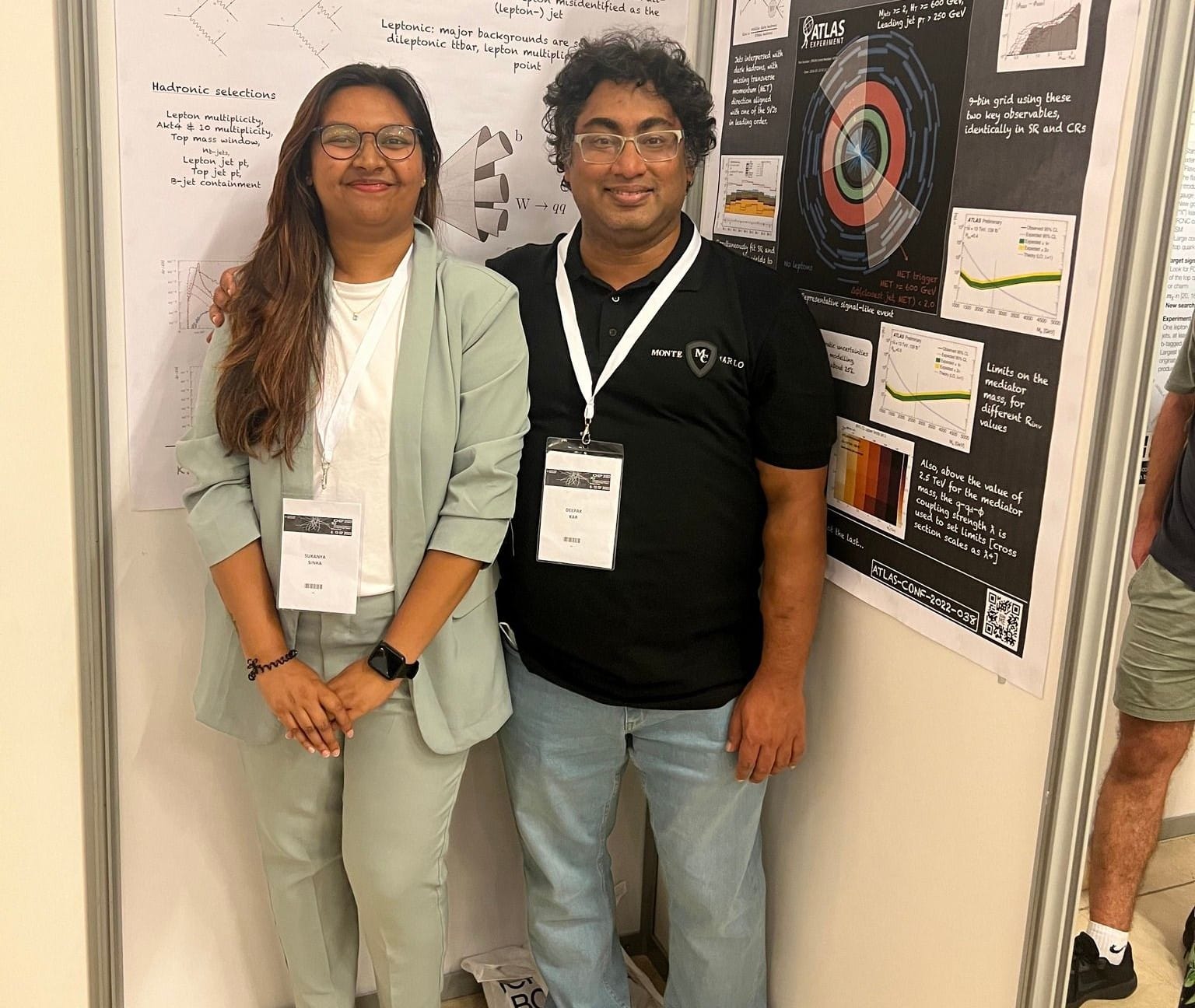In South Africa, a revolutionary method for dark matter search that is setting a new trajectory for future explorations.
The quest to unravel the mysteries of dark matter has taken a significant turn with the latest research from the University of the Witwatersrand (Wits) in South Africa. Spearheaded by Professor Deepak Kar and his former PhD student, now postdoctoral researcher Sukanya Sinha, this study is published in Physics Letters B and marks a pivotal shift from traditional approaches in dark matter exploration.
Dark matter, invisible yet comprising about a quarter of the universe’s mass, has long puzzled scientists. Traditional searches have focused on weakly interacting massive particles (WIMPs), but to date, these efforts have not yielded concrete evidence of its existence. The Wits team, working at the ATLAS experiment at CERN (a center for scientific research in Switzerland), ventured into uncharted territory by investigating semi-visible jets, a novel concept in Dark Matter searches.
Kan, in an interview with FORBES AFRICA, sheds light on the significance of this new approach: “We looked for a very specific signature of dark matter, which no one has ever looked at, and we didn’t find it. So what does it tell us? That the dark matter probably doesn’t exist in that form, or even if it does, the fraction is probably much, much smaller.” This discovery informs and directs future research, eliminating certain possibilities in the elusive search for dark matter.
Kan further elaborates on the practical implications of their findings: “Future research in the exploration of dark matter would be informed by this… Our study is the most prominent result because it’s an experimental research.” He also notes the broader impact of their work: “Our research informs new ways we can look for dark matter in, say, visible jets and beyond. It tells us what is not there, reducing the possibilities.”
Loading...
Discussing the relevance of dark matter research to daily life, Kan states: “It’s not something which helps in everyday lives directly… but it might lead to the development of technologies and techniques which can be used in more practical research.”
He highlights the long-term potential of such fundamental research, drawing parallels with the development of the World Wide Web and advancements in machine learning and artificial intelligence, which originated from similar scientific endeavors.
This research by the Wits University team not only propels the scientific community closer to understanding one of the universe’s greatest mysteries but also exemplifies the profound impact of fundamental research on technological and practical advancements. As the quest for dark matter continues, this novel method introduced by the Wits team stands as a beacon of innovation in the expansive field of astrophysics.
Loading...
